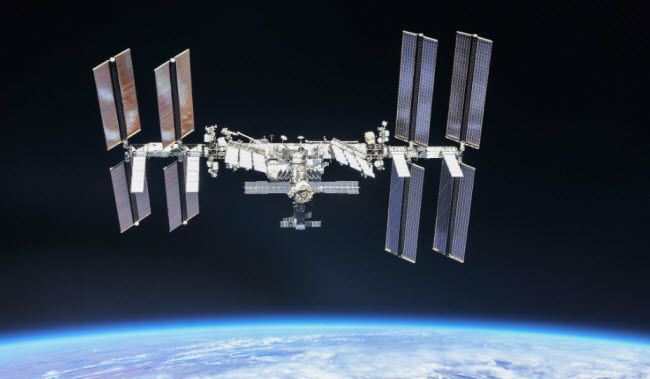The International Space Station (ISS) stands as a testament to the pinnacle of human achievement in space and engineering, resulting from the collaboration of five major space agencies, including NASA (United States) and Roscosmos (Russia). It orbits Earth at an altitude of over 400 kilometers and travels at a speed of 28,000 kilometers per hour. Governed by international treaties and agreements, the ISS functions as a space laboratory for research in astrobiology, meteorology, physics, and other fields. It aims to enhance our understanding of the universe, from high-energy particles across the solar system to distant celestial bodies, and is envisioned as a testing ground for spacecraft systems and equipment necessary for long-term missions to colonize the Moon and Mars.
History and Design of the International Space Station
The concept for the ISS dates back to the mid-1980s when U.S. President Ronald Reagan directed NASA to build an international space station within a decade, inspired by the Russian Mir station. Reagan announced that it would lead to significant advancements in scientific research. Adjustments were made in the 1990s to reduce costs and increase international participation. The United States partnered with Europe, Japan, and Canada, and in 1993 invited Russia to join the project due to its extensive experience in operating space stations. By 1998, all five space agencies were involved: NASA (U.S.), Roscosmos (Russia), JAXA (Japan), the European Space Agency (ESA), and the Canadian Space Agency (CSA).
The ISS was designed as a series of interconnected cylindrical modules powered by solar energy, divided into two primary sections: the Russian orbital segment managed by Russia and the American segment, which includes contributions from the U.S. and other nations. Construction began in November 1998 with the launch of the Russian Zarya control module, which provided energy, communications, and altitude control functions. It is now primarily used for storage and propulsion. Two weeks later, astronauts aboard the Space Shuttle Endeavour delivered a key U.S. component to connect the Russian and American modules. Subsequent modules arrived and were assembled, with the first crew arriving on November 2, 2000, including Russian astronauts Yuri Gidzenko and Sergei Krikalev and American astronaut Bill Shepherd, who arrived aboard a Russian Soyuz spacecraft.
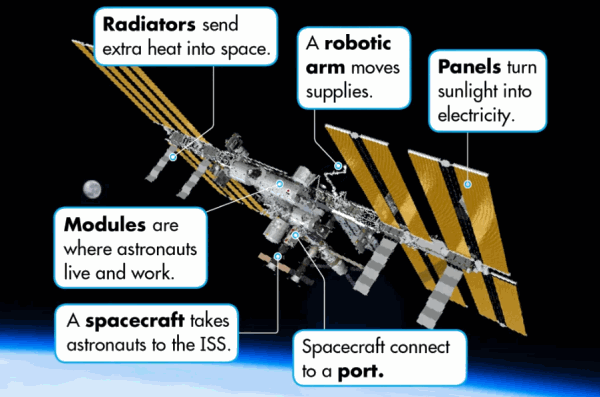
Early research on the ISS focused on life sciences and materials science in a microgravity environment. Although promising, the research was interrupted after the Space Shuttle Columbia disaster in 2003, which halted shuttle flights and reduced the crew from three to two, limiting scientific output. The situation worsened with the temporary return of astronauts to Earth via Soyuz, leading to automated station management.
In 2006, shuttle flights resumed, increasing the ISS crew size to three and resuming construction in September. This included adding a pair of solar arrays and a thermal radiator. In 2007, the Destiny module was connected to the Harmony module, which had a docking port for the space shuttle and ports linking to the Japanese Kibo laboratory, equipped with an external porch for space experiments, and the European Columbus laboratory, added in 2008. Columbus, Europe’s first space laboratory, conducts research in biology and fluid dynamics. That year, the enhanced Ariane 5 rocket, the heaviest spacecraft in Europe, launched the Automated Transfer Vehicle Jules Verne, carrying 7,700 kg of supplies. Canadian astronauts also brought advanced robotic arms, Dexter and Canadarm2, capable of performing tasks previously requiring spacewalks.
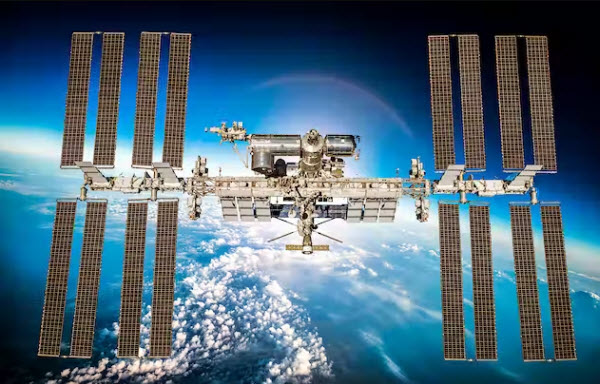
By 2009, the ISS was operating at full capacity, accommodating a six-member crew. This required constant docking of Soyuz lifeboats as safety measures. The crew typically included three Russians, Americans, and one astronaut from Japan, Canada, or ESA.
Today, the ISS spans the size of a football field, with ongoing construction. Both the American and Russian segments provide power, laboratories, living spaces, and docking ports. Astronauts can freely move between connected sections. In 2016, NASA added the Expandable Activity Module, potentially paving the way for future space hotels. Recently, in 2021, the Russian Nauka science module was added.
Importance
Everything living on Earth has evolved to thrive in its native environment, not in the challenging conditions of outer space. The ISS offers an ideal environment for studying life and conducting research in microgravity and radiation exposure, factors that significantly impact biological functions. The station provides a unique opportunity to understand how space affects our complex biology and how to live and work in these unfamiliar conditions.
Within the ISS, astronauts conduct a wide range of scientific experiments to help humans understand how to live in space long-term. This includes monitoring plant and human tissue growth in microgravity, studying microbial responses to space, and examining DNA and gene impacts. Experiments also extend outside the station, using instruments like NICER to study neutron stars and the Alpha Magnetic Spectrometer to capture and analyze cosmic rays, shedding light on the universe’s origins.
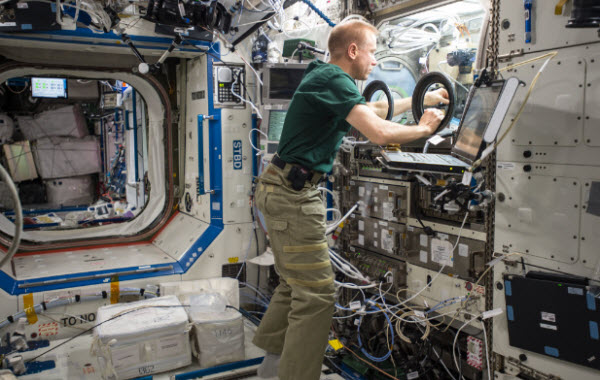
Additionally, psychological studies of astronauts’ isolation help scientists develop strategies for coping with longer space missions. Since its inception, over 200 astronauts from 20 countries have visited the ISS. In recent years, astronauts typically stay for three to six months, with the longest stay being nearly a year, achieved by NASA astronaut Scott Kelly and Russian cosmonaut Mikhail Kornienko in 2016, and later surpassed in 2021 by Russian astronaut Pyotr Dubrov and American Mark Vande Hei, who spent 355 days aboard.
Living on the ISS
Crew members must adapt to a station where the sun rises and sets 16 times a day. To sleep well, they secure themselves to prevent floating due to microgravity. Daily intensive exercise is crucial to maintain bone health and counteract muscle atrophy. Astronauts face various challenges in the absence of gravity, including balance and orientation issues, fluid distribution changes, and unexplained vision deterioration. Due to harmful space radiation, which can increase cancer risks, teams on Earth are designing space suits to protect long-duration travelers from cosmic particles.
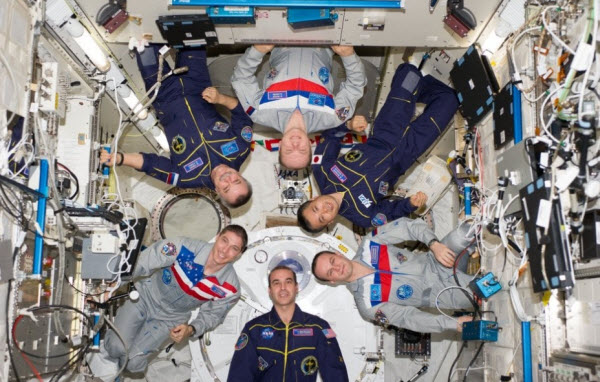
Traveling to and from the ISS
Until 2011, astronauts were transported to the ISS by U.S. space shuttles and the Russian Soyuz spacecraft. After the end of the shuttle program, Soyuz was the sole means of transport until SpaceX successfully launched a crewed mission in May 2020. This was followed by a safe and successful return of American astronauts Doug Hurley and Bob Behnken in August. Now, astronauts can again launch from U.S. shores. NASA’s reliance on private companies could enhance competition, potentially lowering costs and making space travel more accessible.
Currently, operational plans for the ISS extend at least until 2024, with the possibility of an extension.
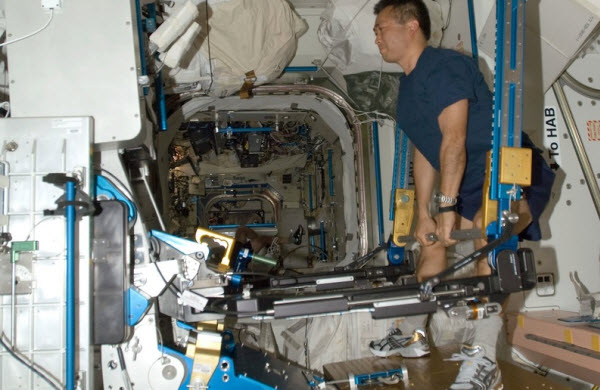
Quick Facts About the ISS
- American astronaut Christina Koch holds the record for the longest continuous stay by a female astronaut, spending 328 days aboard the ISS.
- The U.S., ESA, Japan, and Canada have not yet determined an end date for the ISS program. However, the Biden administration indicated in 2021 that U.S. support will continue until 2030, while Russia plans to withdraw in 2024 to focus on its own space station project.
- The ISS completes one orbit around Earth every 90 minutes, resulting in 16 sunrises and sunsets each day.
- The station has solar panels equivalent to one acre, so it can sometimes be seen from Earth at dawn or dusk, even from large cities.
- Astronauts regularly conduct spacewalks to build, maintain, and update the station.
- The station’s solar panels are 109 meters long, making them longer than the wingspan of the Airbus A380, the world’s largest passenger aircraft, which is 80 meters wide.
- Power cables within the station stretch 13 kilometers.
- Up to eight spacecraft can dock with the ISS simultaneously.
- Spacecraft can reach the ISS as soon as four hours after launch.
- The ISS’s orbital path covers over 90% of Earth’s surface, allowing astronauts to capture millions of photos of the planet.
- The station travels a daily distance equivalent to the Moon’s distance from Earth.
